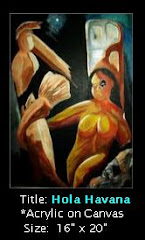
Skelton and two of his characters as caricatured by Sam Berman for NBC's 1947 promotional book.
Today, more than 35 years after Red Skelton’s long running TV show left the air, a whole generation has grown up without ever knowing America’s Clown Prince of the 1950’s and 1960’s television.
Part of that is Red’s fault, of course - since he steadfastly refused to allow reruns of his shows to air – or allow the sale of VHS tapes of his show – after he left network television.
Skelton, you see, took it very personally when his show nearly 20 years was cancelled . . . even though it was still in the top 20 ratings.
The CBS network had enjoyed a remarkable run of ratings success during the 1960’s airing `lowbrow’ comedies like The Beverly Hillbillies, Petticoat Junction, and Green Acres and Hee-Haw.
CBS, once known as `The Tiffany Network’, due to it’s high quality programming was now derisively called the “Country Broadcasting System” in some quarters. The audiences numbers were good, but the demographics were older than advertisers wanted.
So CBS conducted what is now called the `rural purge’ of some of their best performing shows in an attempt to become more `hip’ and `relevant’.
Red Skelton, after nearly two decades of television, was a victim of this `revitalization’ of the network. He moved to NBC for one year, but the new show format and time period just never took off.
After he left television, Skelton never really forgave the network bosses. He would show up occasionally as a guest on someone else’s show, and would do concerts to packed houses.
But his TV career was essentially over.
I saw Red perform – in concert – in the 1980’s, and he put on a helluva show. But growing up, Tuesday nights were defined by the Red Skelton Show.
David Rose would start things with Holiday For Strings, the Alan Copeland Singers (previously called the SKELTONES) and the Tom Hanson Dancers would do a production number to open the show.
Red would come out, do a monologue, and usually invite the guest star out for a minute. Then they would do one, sometimes two comedy sketches . . . and usually a musical guest star would perform a couple of numbers.
Then it was `Good Night and God Bless. . . ‘
Ok, it was a formula. But it was an entertaining formula. And the production values (choreography, set designs, and writing) were remarkable given the grueling task of putting on an hour-long show once a week.
We’ve only a few examples of the Red Skelton Show in the public domain. Most of the shows, if they’ve been preserved at all, are locked in a vault somewhere.
And that’s really too bad. Skelton was a joy to watch.
Of course, his brand of humor today may be considered passé’. Too kind and gentle – too unsophisticated for today’s tastes.
If that’s true, then it’s really too bad again. But judge for yourself.
You might find yourself pleasantly surprised.
The following videos are available on Blip.tv.
Red Skelton Half Hour 1 Duration: 23:10
Red Skelton Comedy Hour 1 Duration: 49:42
Red Skelton Duration: 25:05
Red Skelton Duration: 51:14
Red Skelton Duration: 28:07
Red Skelton Duration: 58:32
Red Skelton Duration: 25:54
Red Skelton Duration: 29:23
Red Skelton Duration: 29:10
Red Skelton Duration: 26:48
Red Skelton Duration: 29:19
His overt patriotism during the Vietnam War, no doubt, caused him to fall out of favor in some circles in Hollywood. One of Red’s most famous examples of that is his dissection of the Pledge of Allegiance.
We’ve a huge selection of Red Skelton’s work on radio, something which I’ll address in another blog.


















No comments:
Post a Comment